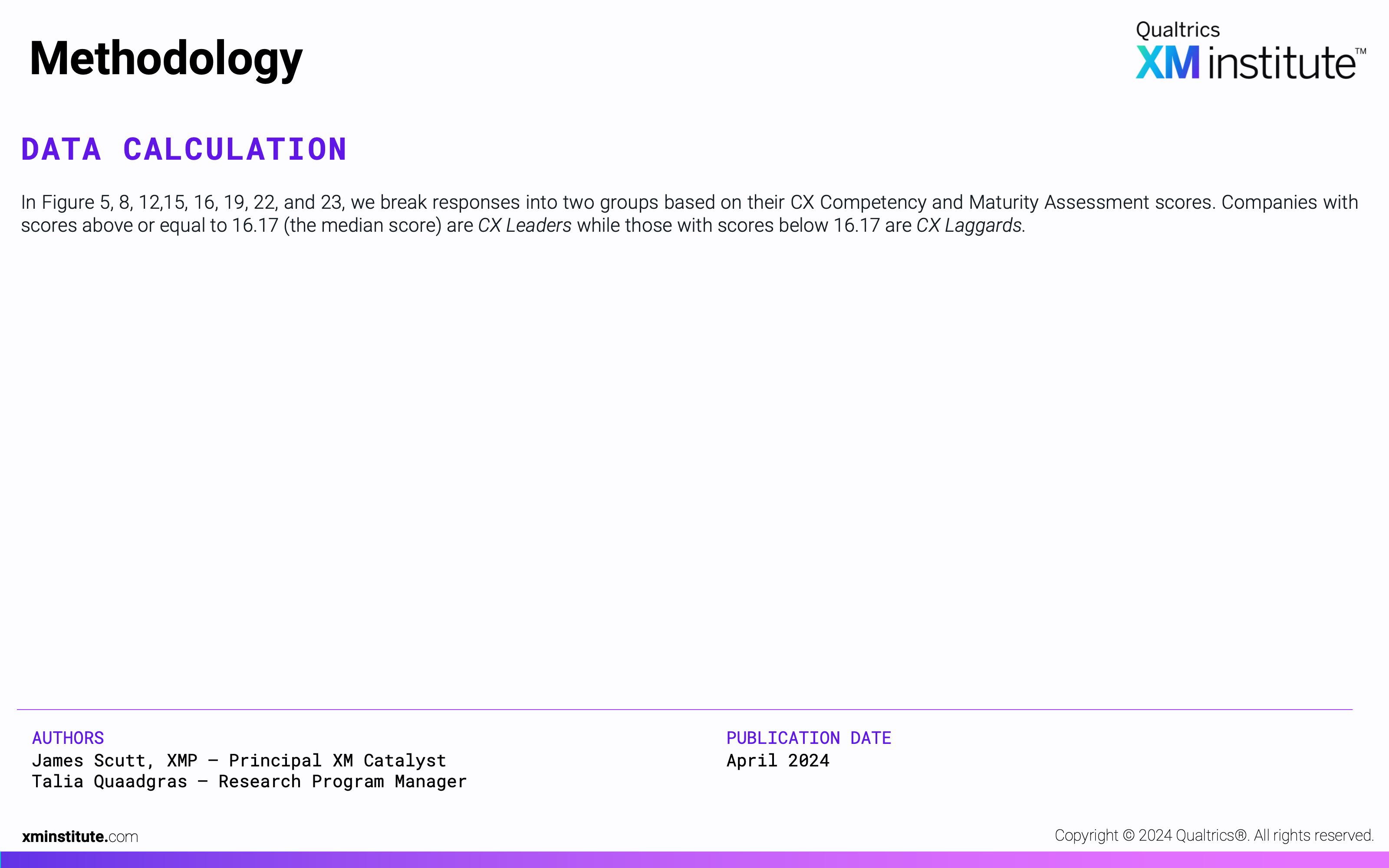Key Findings
To understand the current state of customer experience (CX) management, Qualtrics XM Institute surveyed 234 CX practitioners about their organization’s CX efforts. As part of this study, we also asked them to complete our CX Competency and Maturity Assessment and XM-Centric Culture Assessment. From our analysis, we found that:
- Over two-thirds of organizations remain in the first two stages of CX Maturity. Seventy-one of practitioners rated their CX Maturity as either Stage 1: Investigate (41%), or Stage 2: Initiate (30%). Eighteen percent say their organization is in the third stage of maturity (Mobilize), while 2% have achieved the fifth stage: Embed. Use the Customer Experience (CX) Maturity Assessment to evaluate your organization’s CX skills and competencies.
- Most organizations have cultures that can nurture XM adoption. Forty percent of CX practitioners say their XM-Centric Culture Level is nurturing or very nurturing, according to the XM-Centric Culture Assessment. Meanwhile, 23% of organizations have an inhibiting culture, which may prevent XM practices from taking hold.
- CX Leaders enjoy better business outcomes. Compared to CX Laggards (Maturity Assessment scores below the median), CX leaders are more likely to report that their CX programs have significantly improved key business outcomes for their organization, including customer retention, cross-selling, employee retention, and cost reduction. They are also more likely to describe their organization’s financial results as somewhat or significantly better than competitors (63% vs 40%).
- Other competing organizational priorities is the top obstacle to CX success. Both CX leaders and CX laggards cite this as a significant obstacle to CX success, with laggards citing it 16 points more frequently than leaders. The largest gap between obstacles selected by CX leaders’ and laggards’ was for unclear return on investment (34-point difference.)
Figures
Here are the figures in this report:
- CX Maturity Assessment
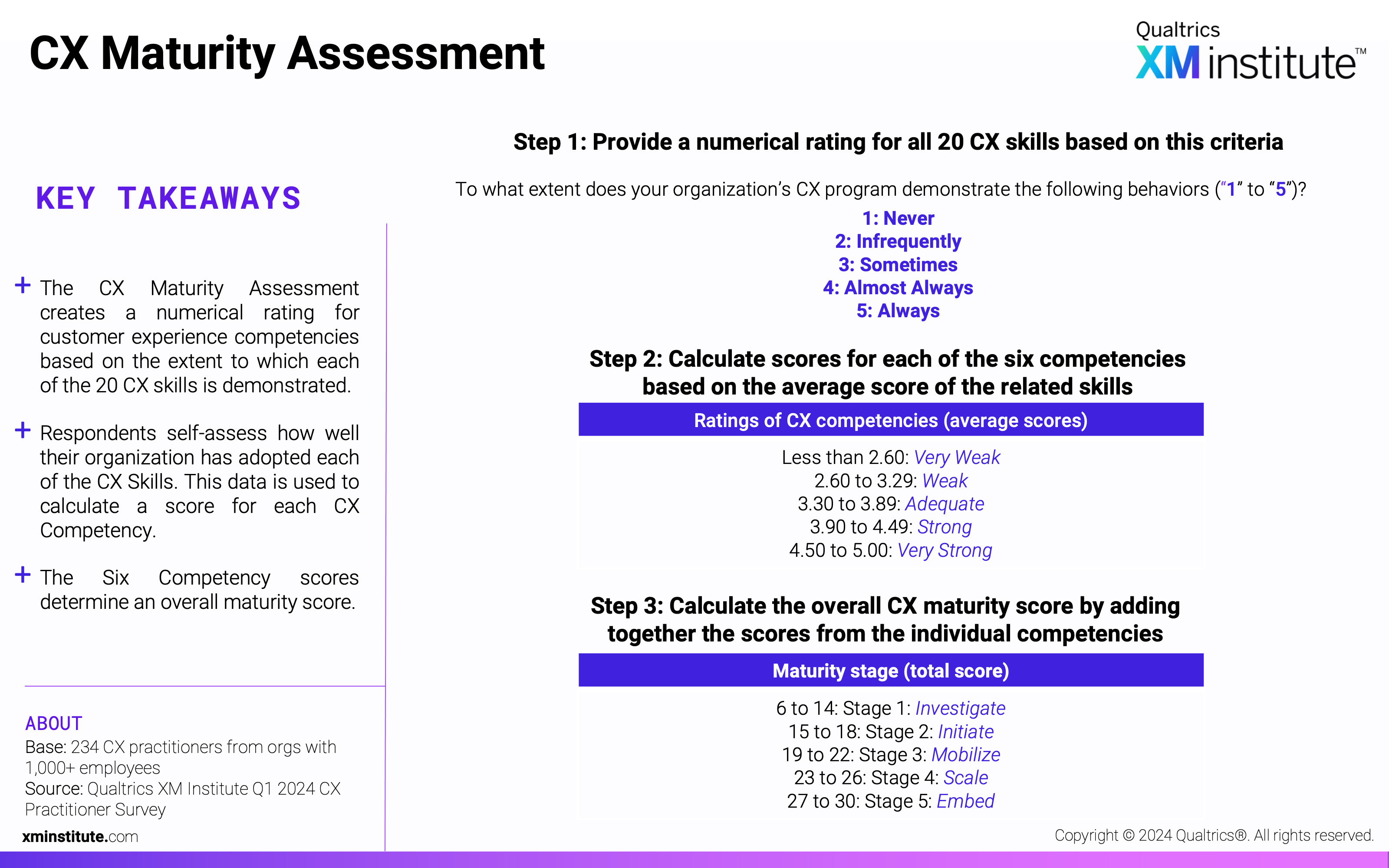
- CX Maturity
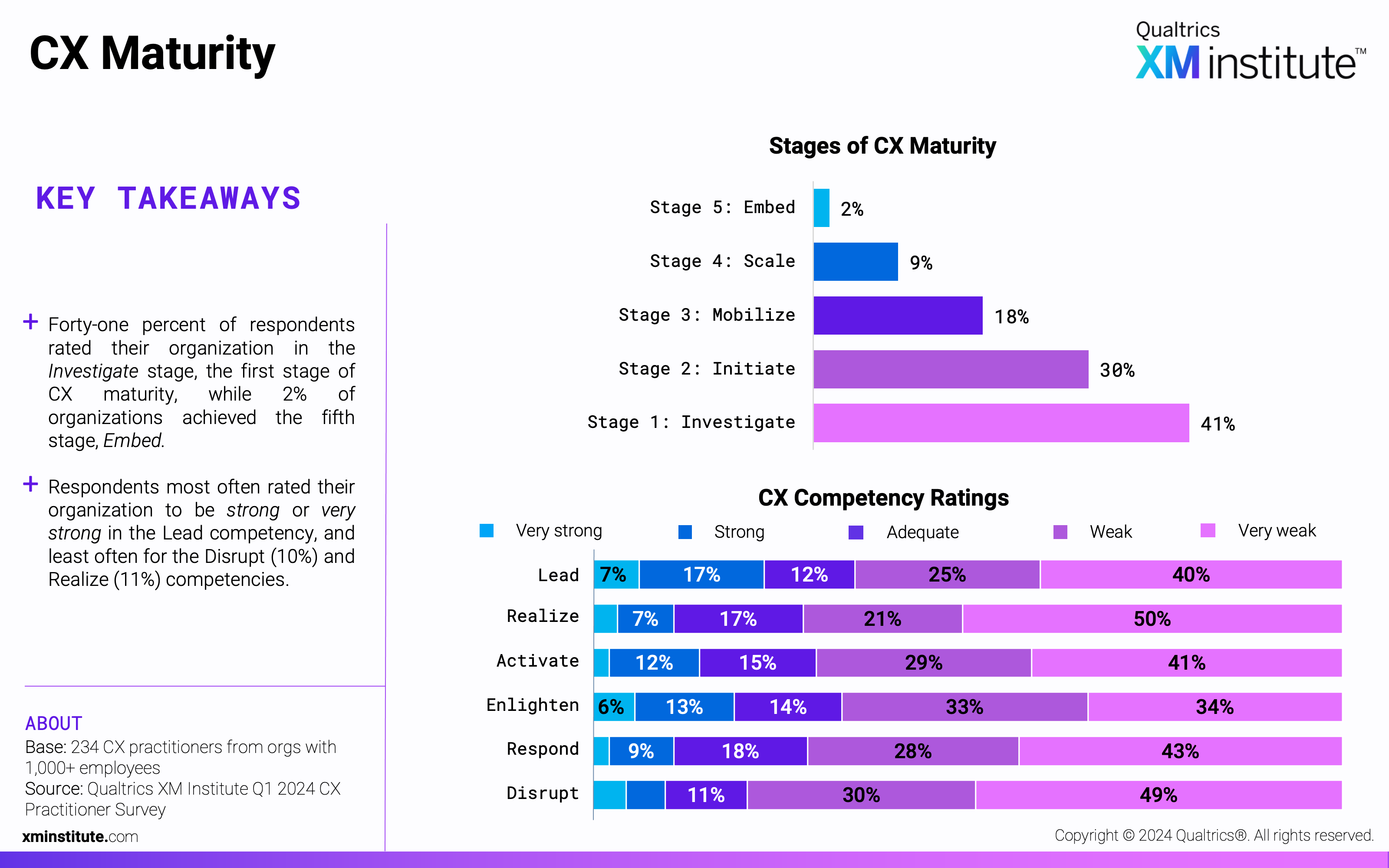
- XM-Centric Culture Assessment
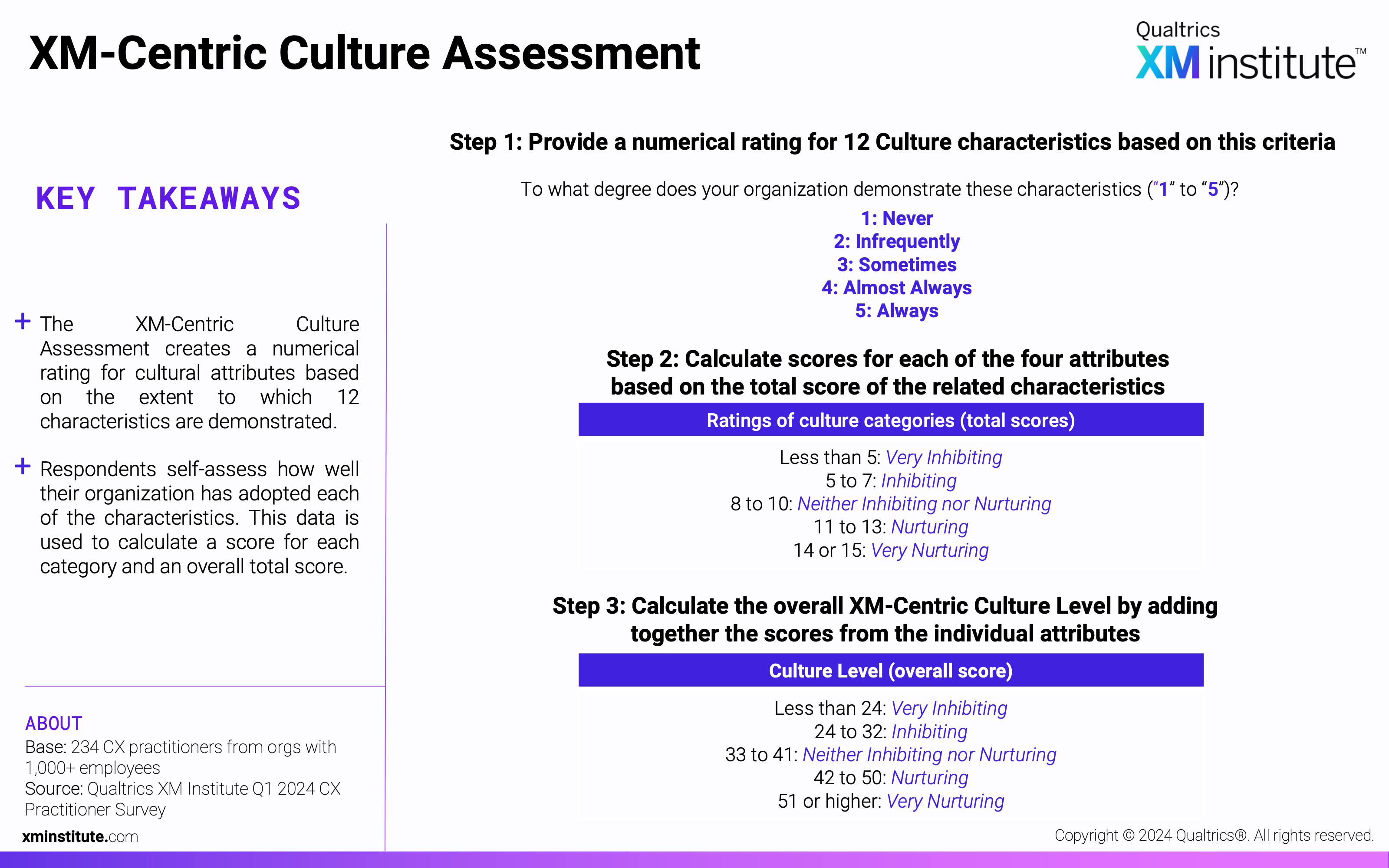
- XM-Centric Culture Level
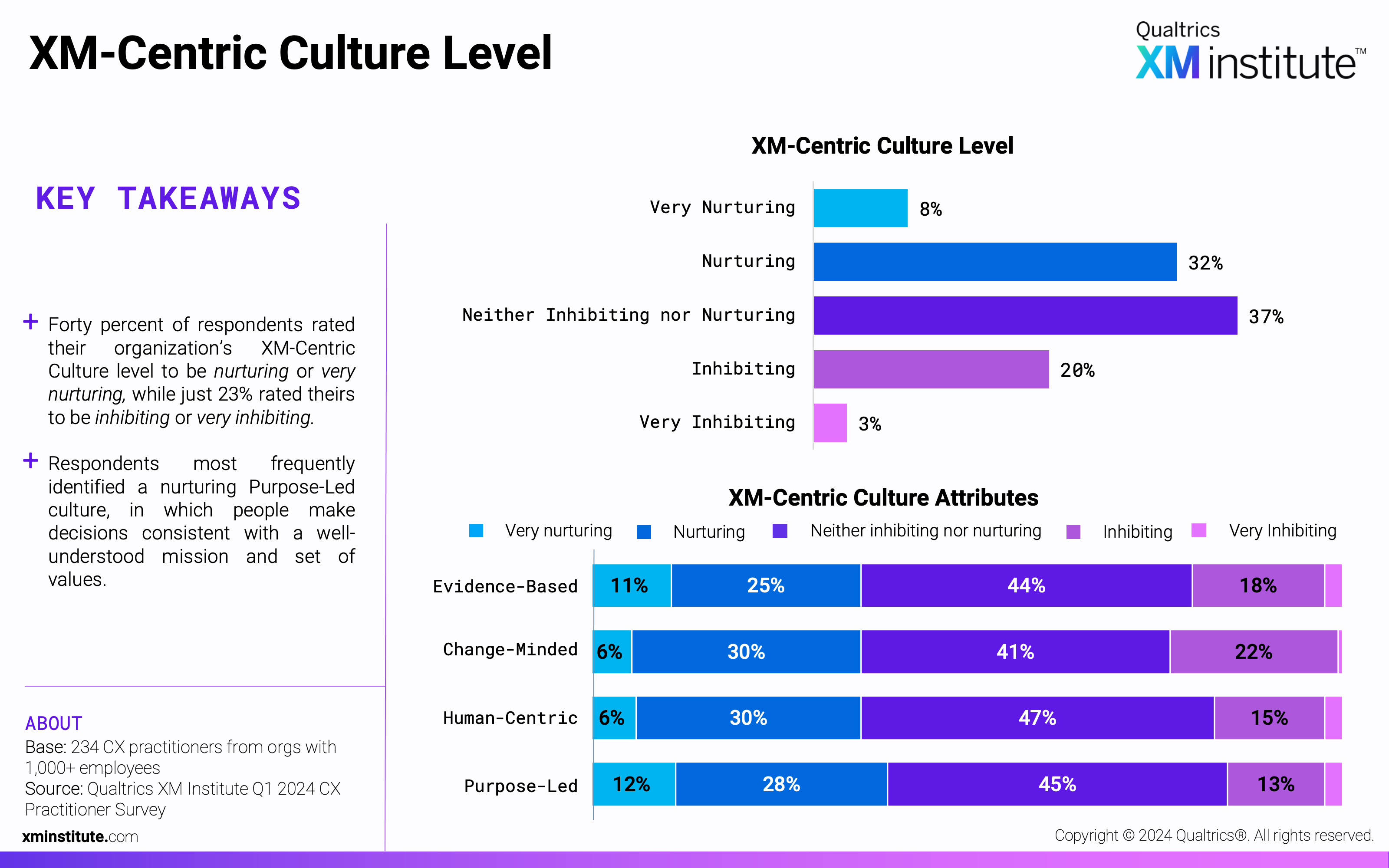
- XM-Centric Culture Levels: Leaders vs. Laggards
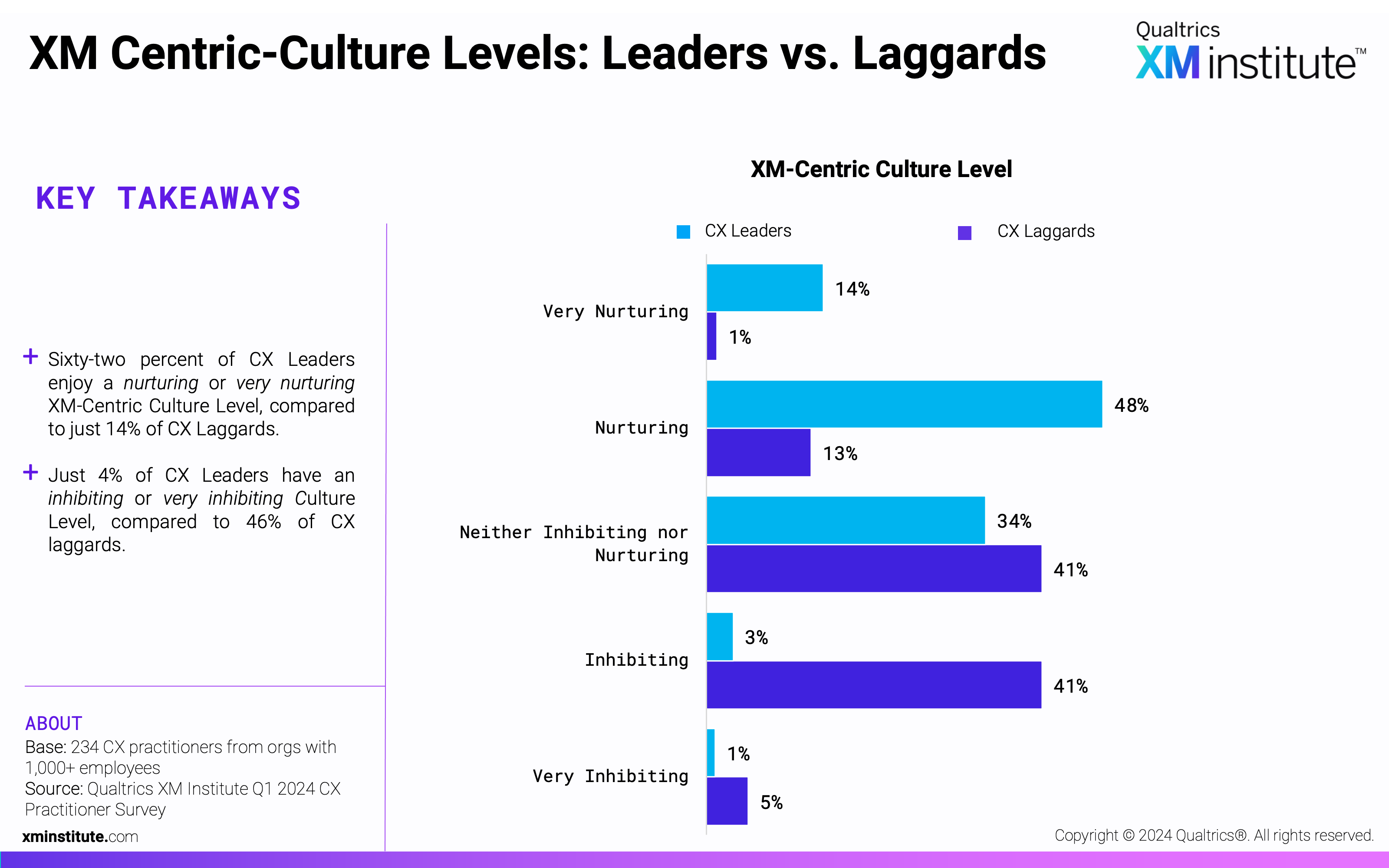
- Priority of Improving XM Areas
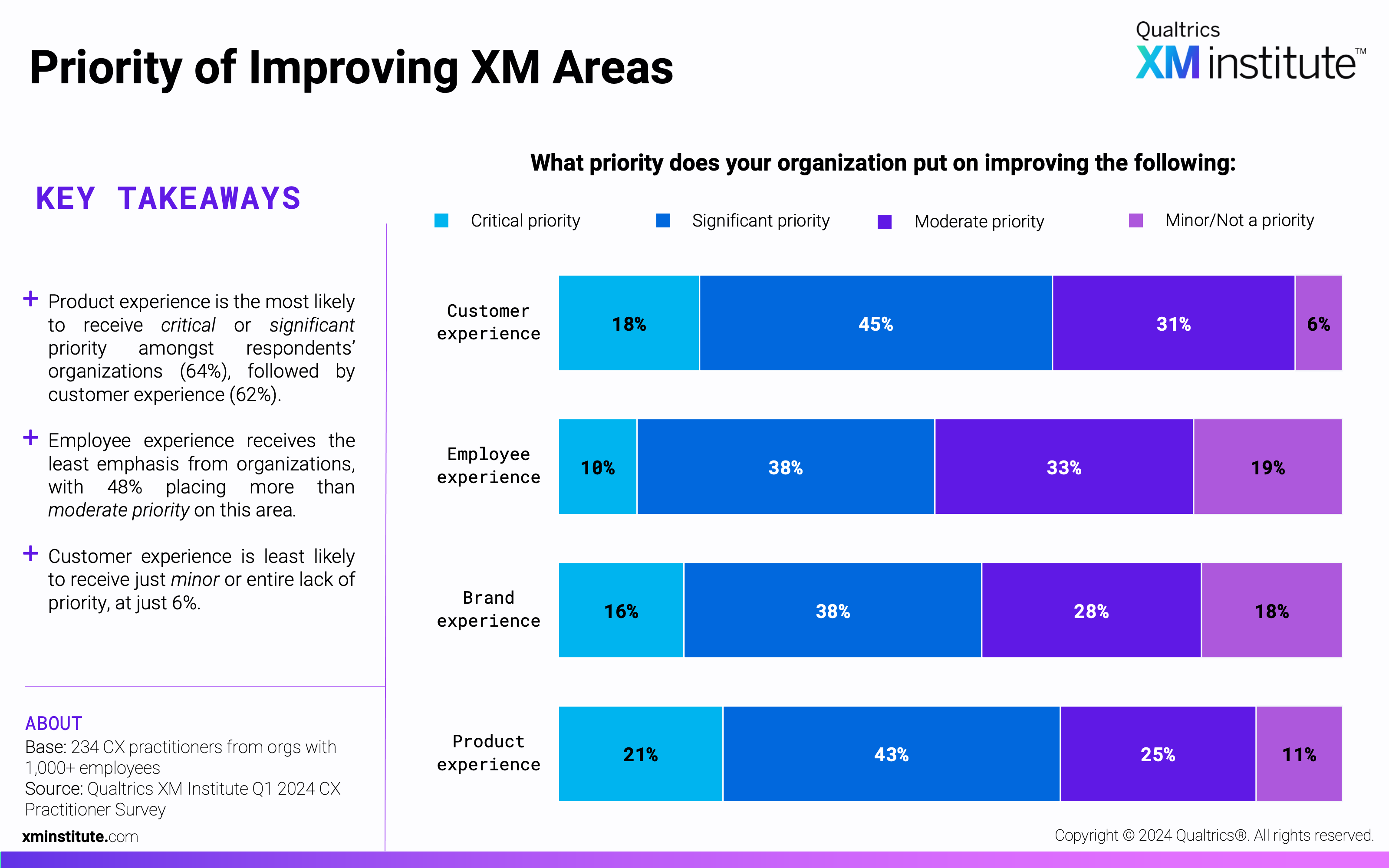
- Executives and Customer Experience
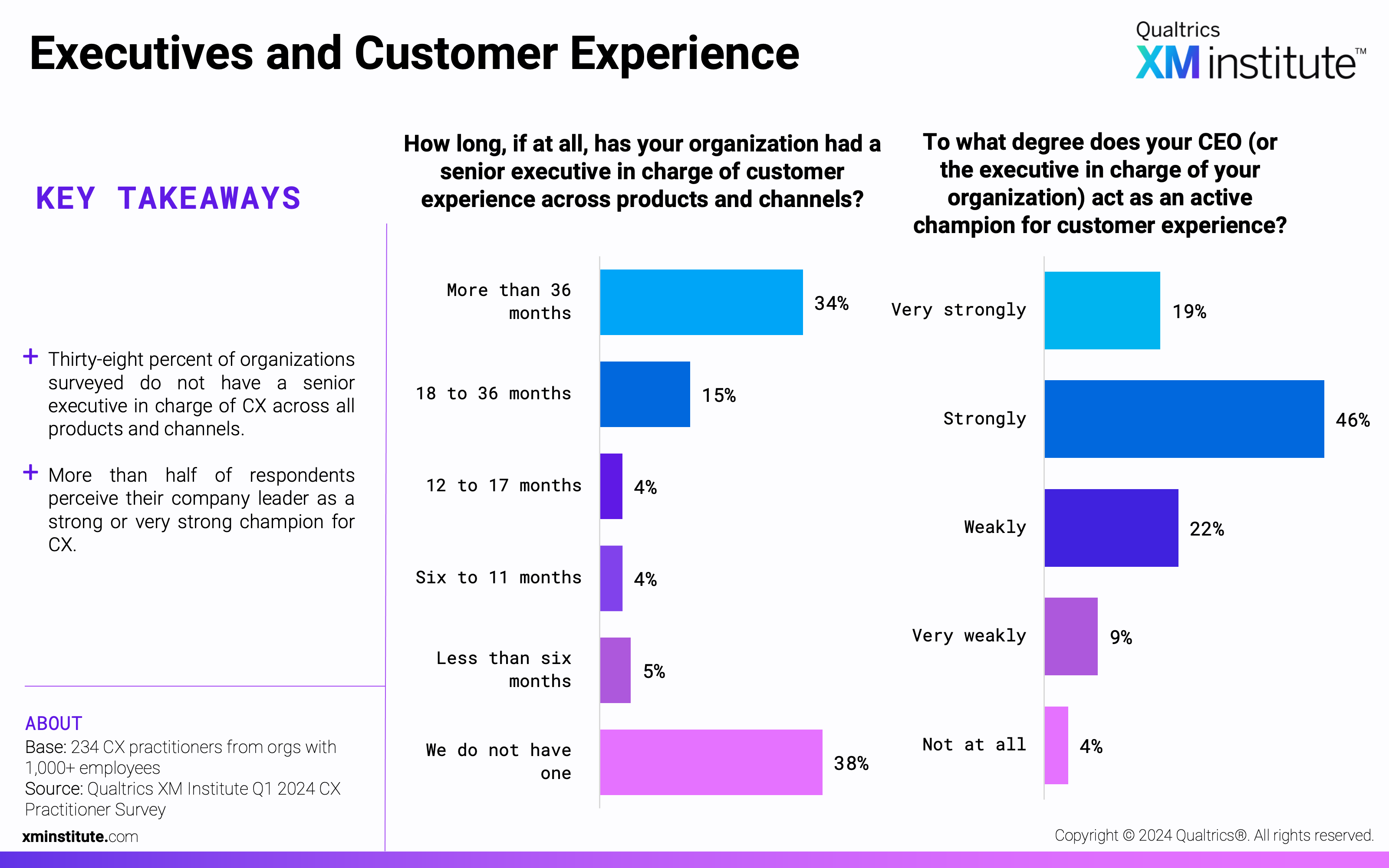
- Executive Support: leaders vs. Laggards
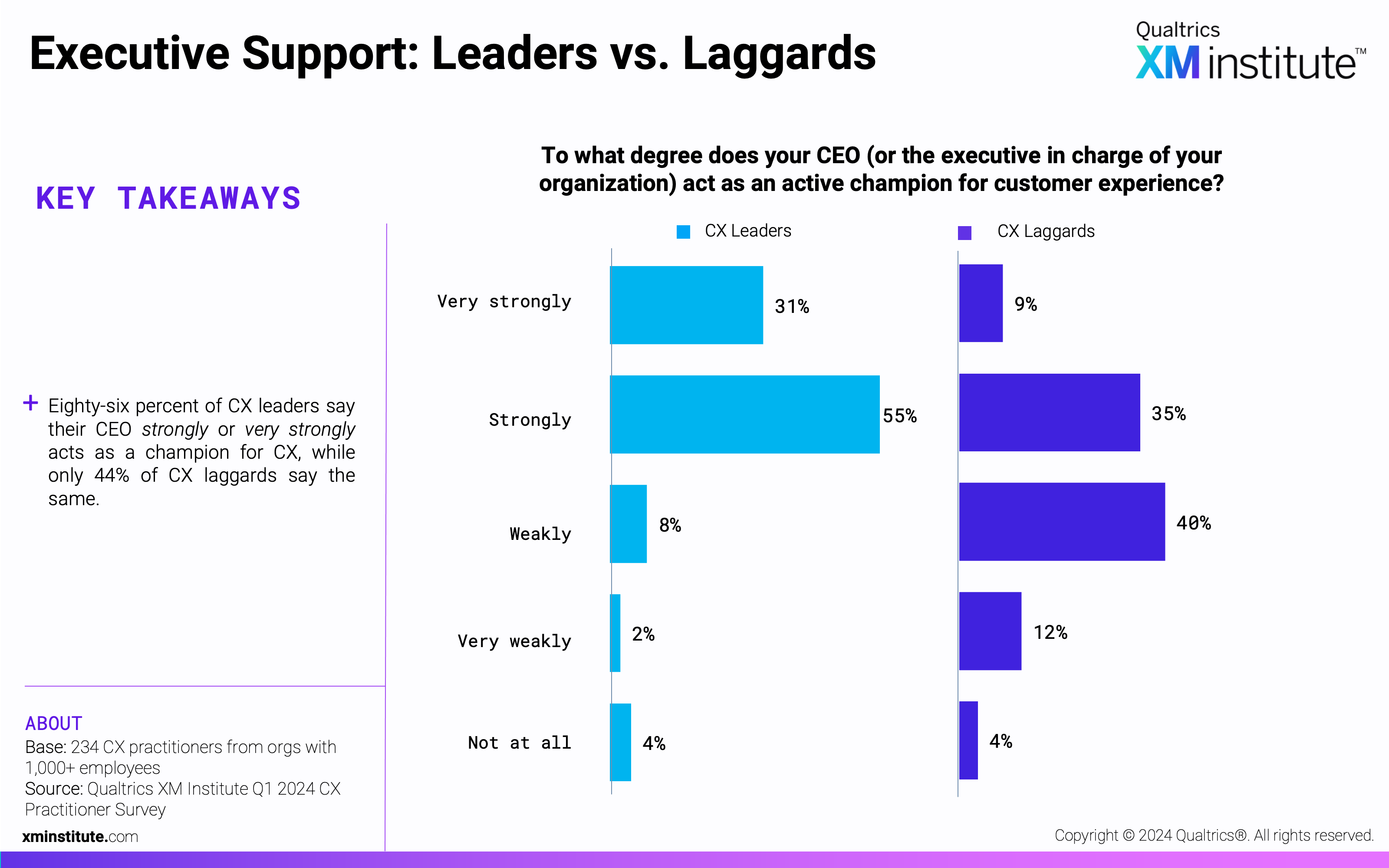
- CX Coordination
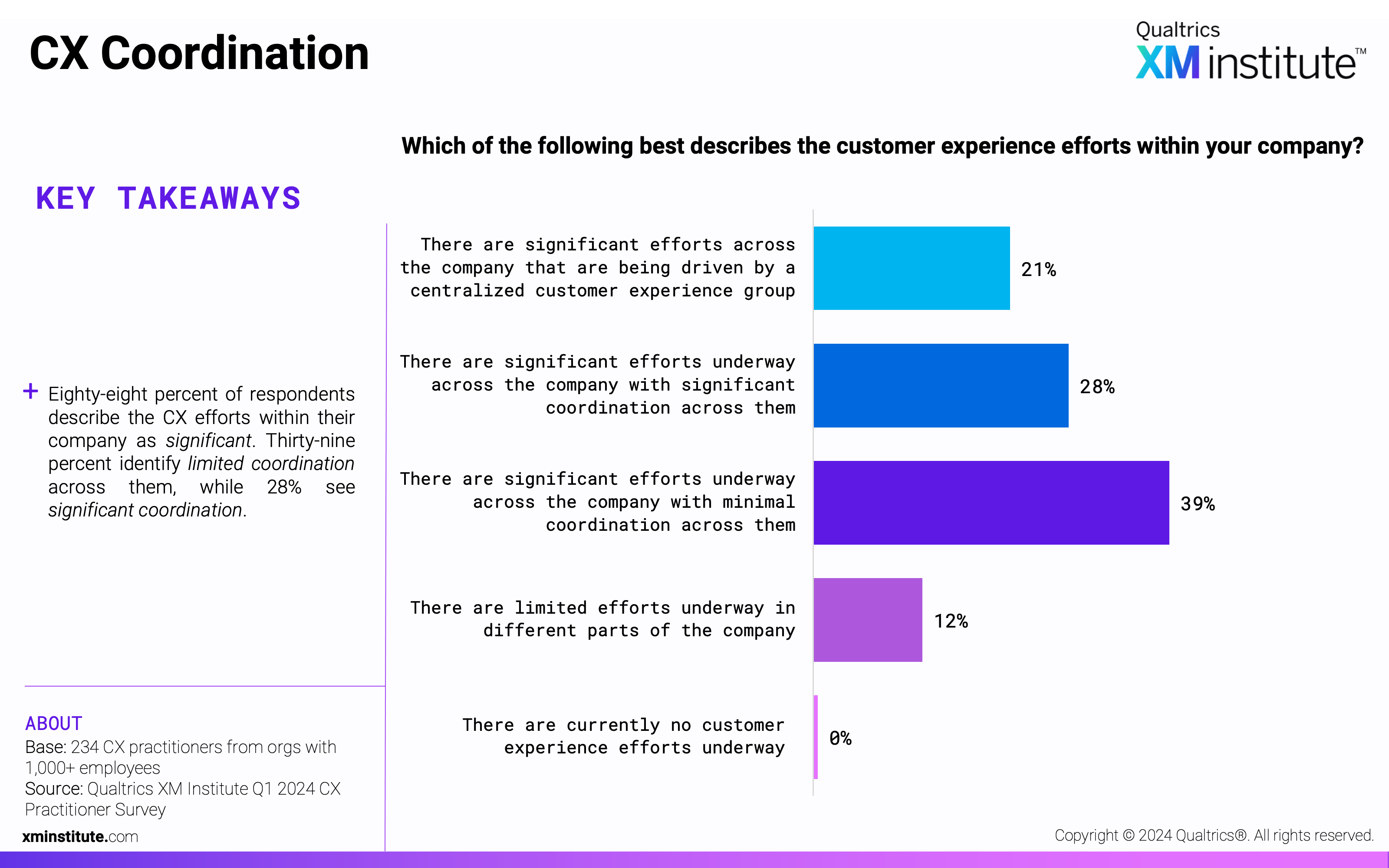
- Centralized CX Groups
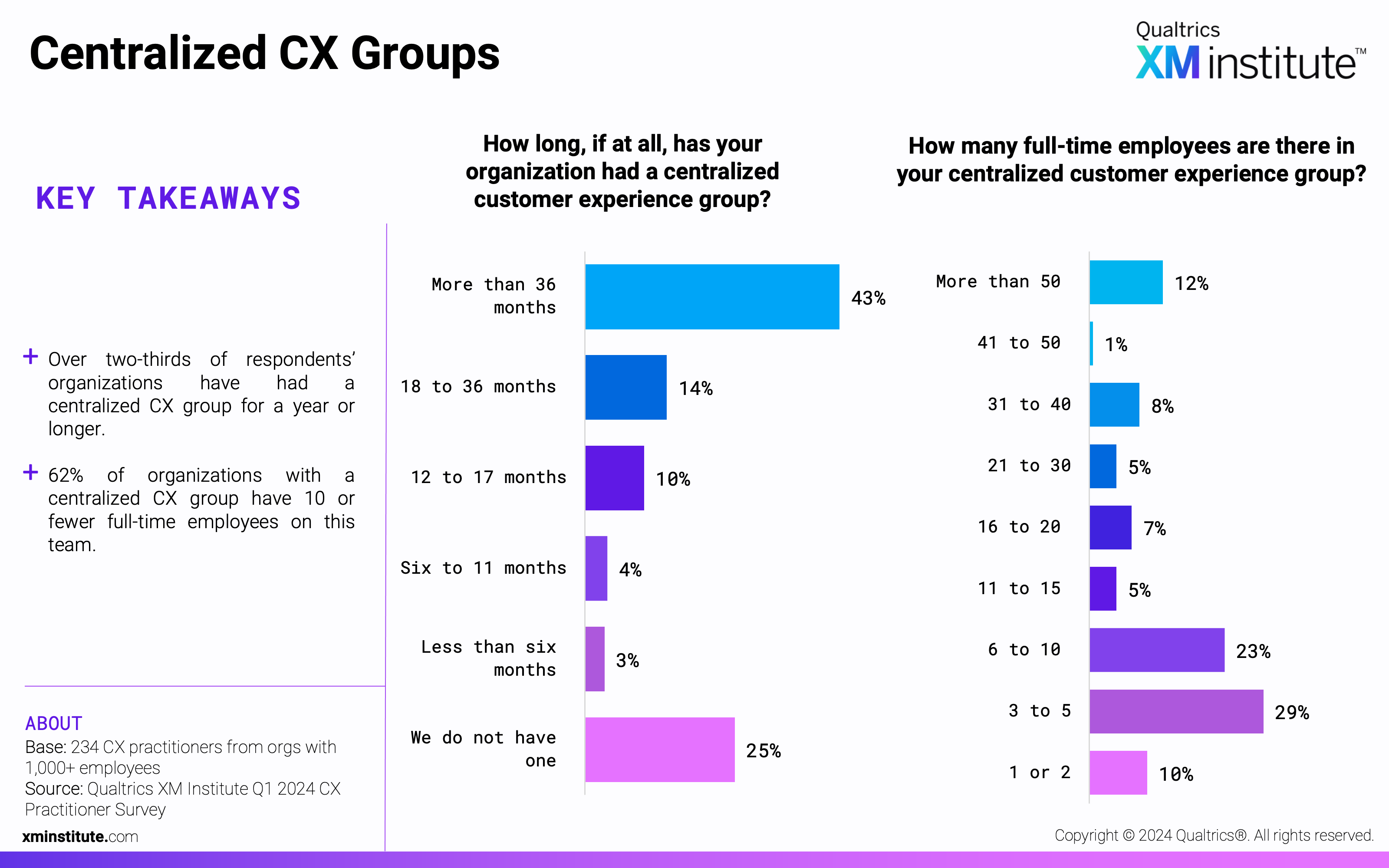
- Channel Experience
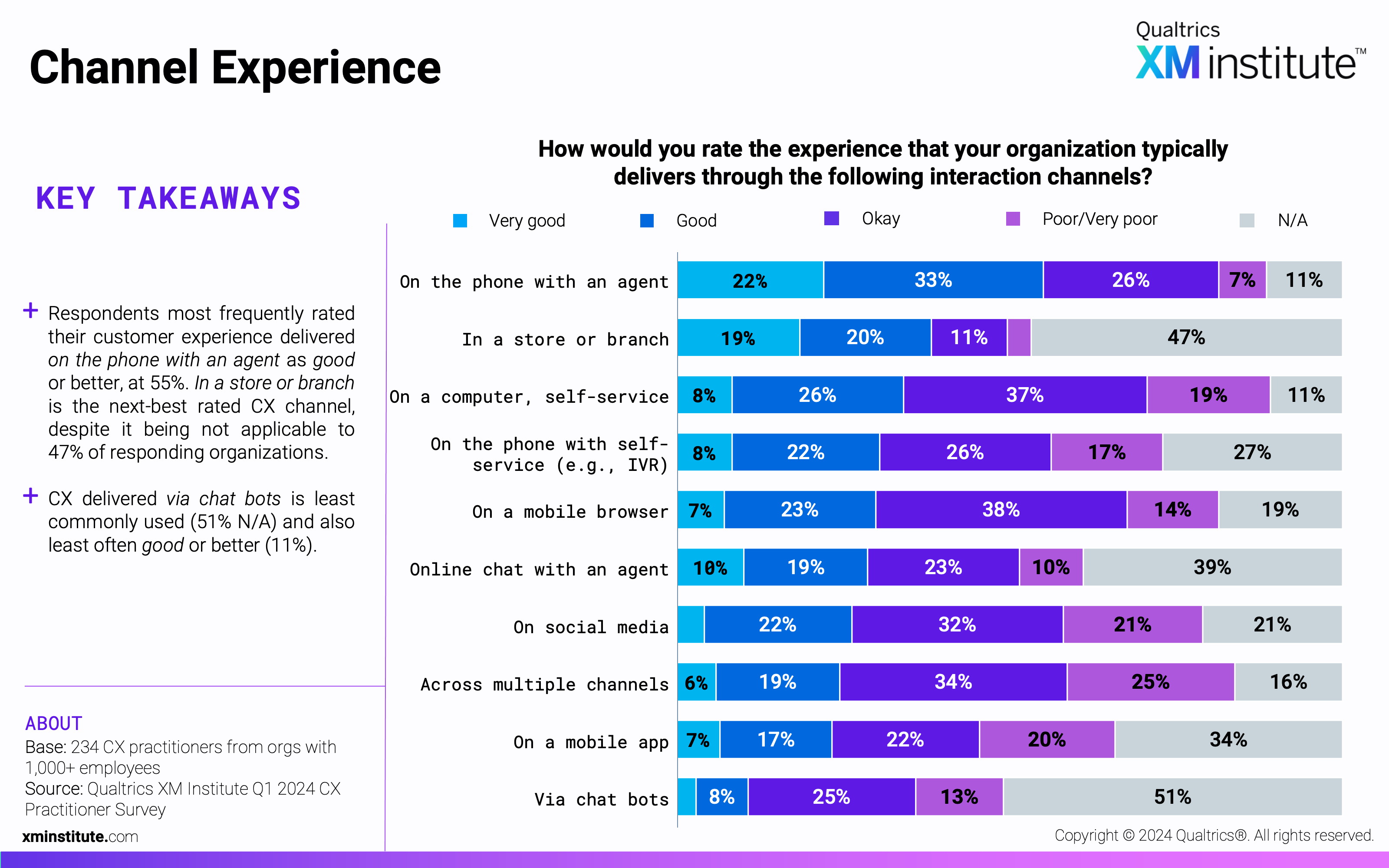
- Interaction Quality: Leaders vs. Laggards
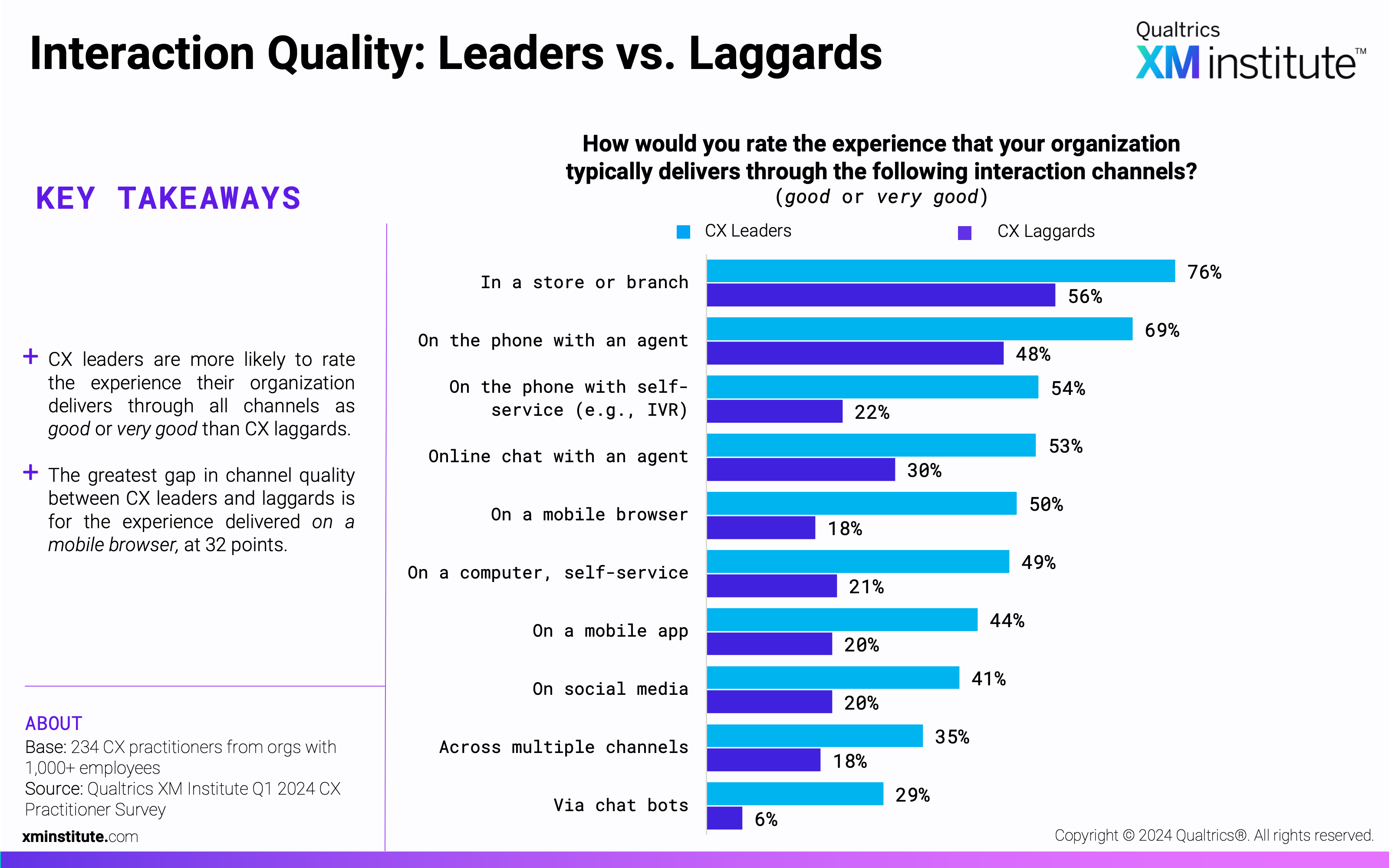
- CX Metrics and Customer Listening Posts
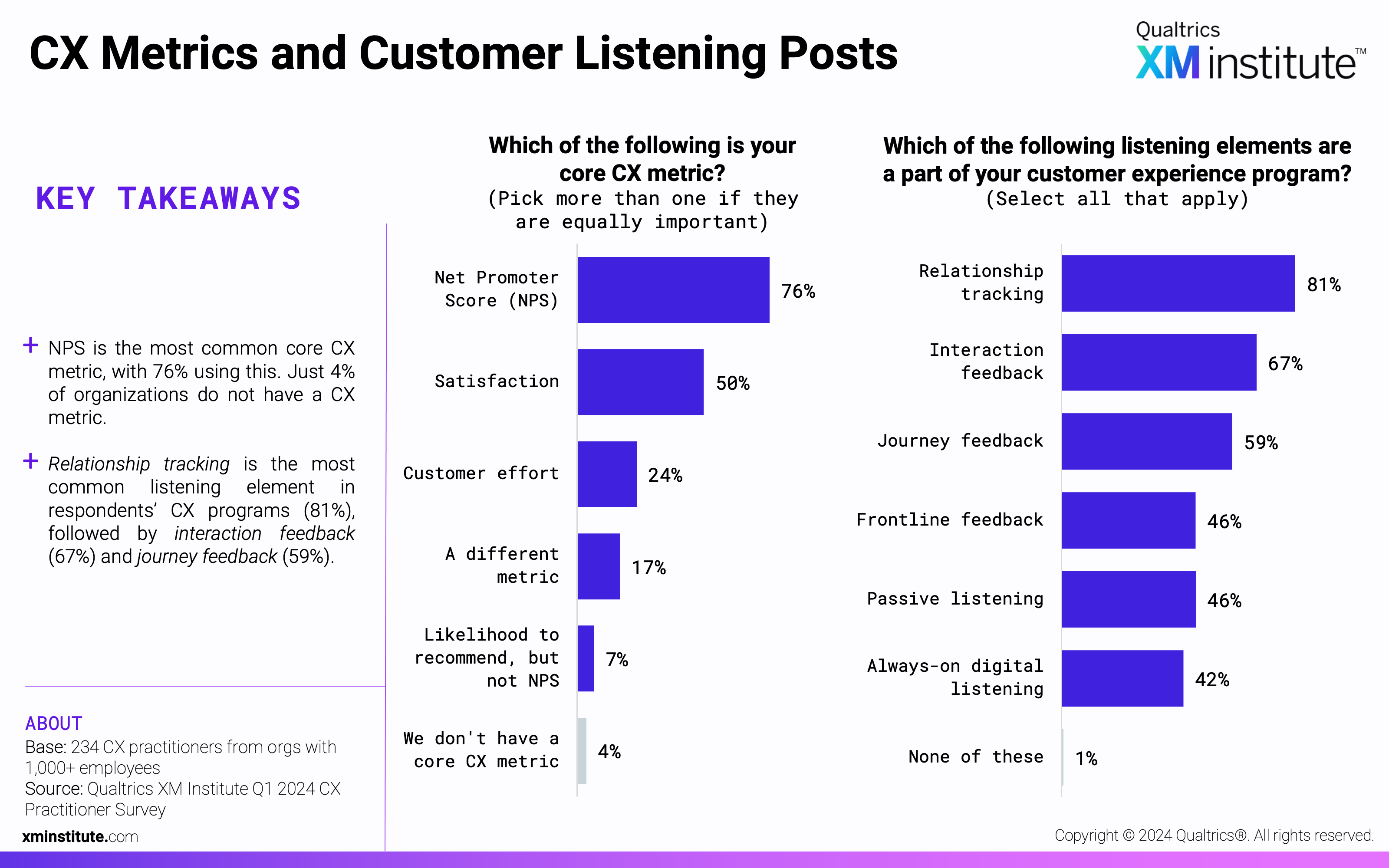
- Listening Effectiveness
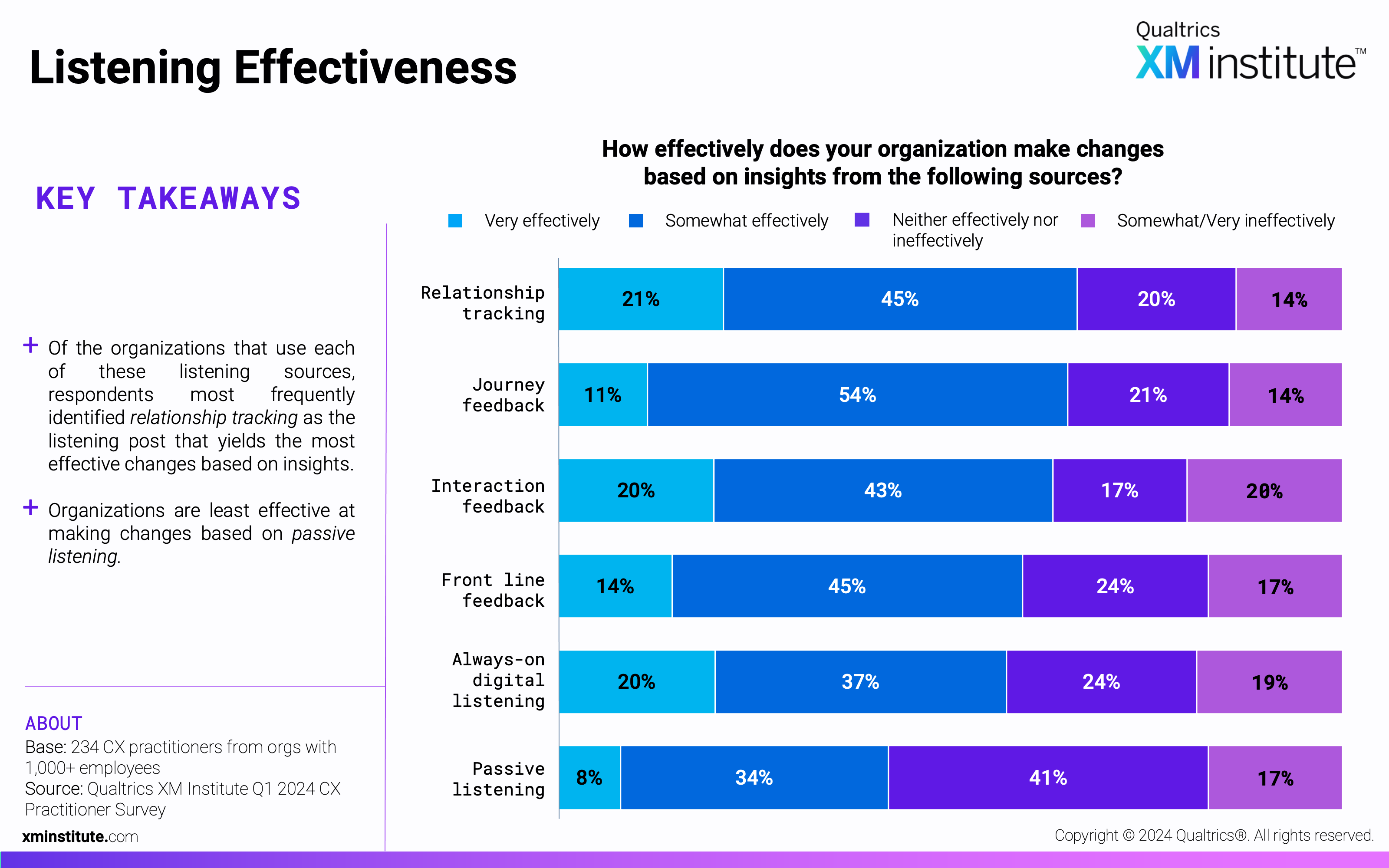
- Core CX Metric: Leaders vs. Laggards
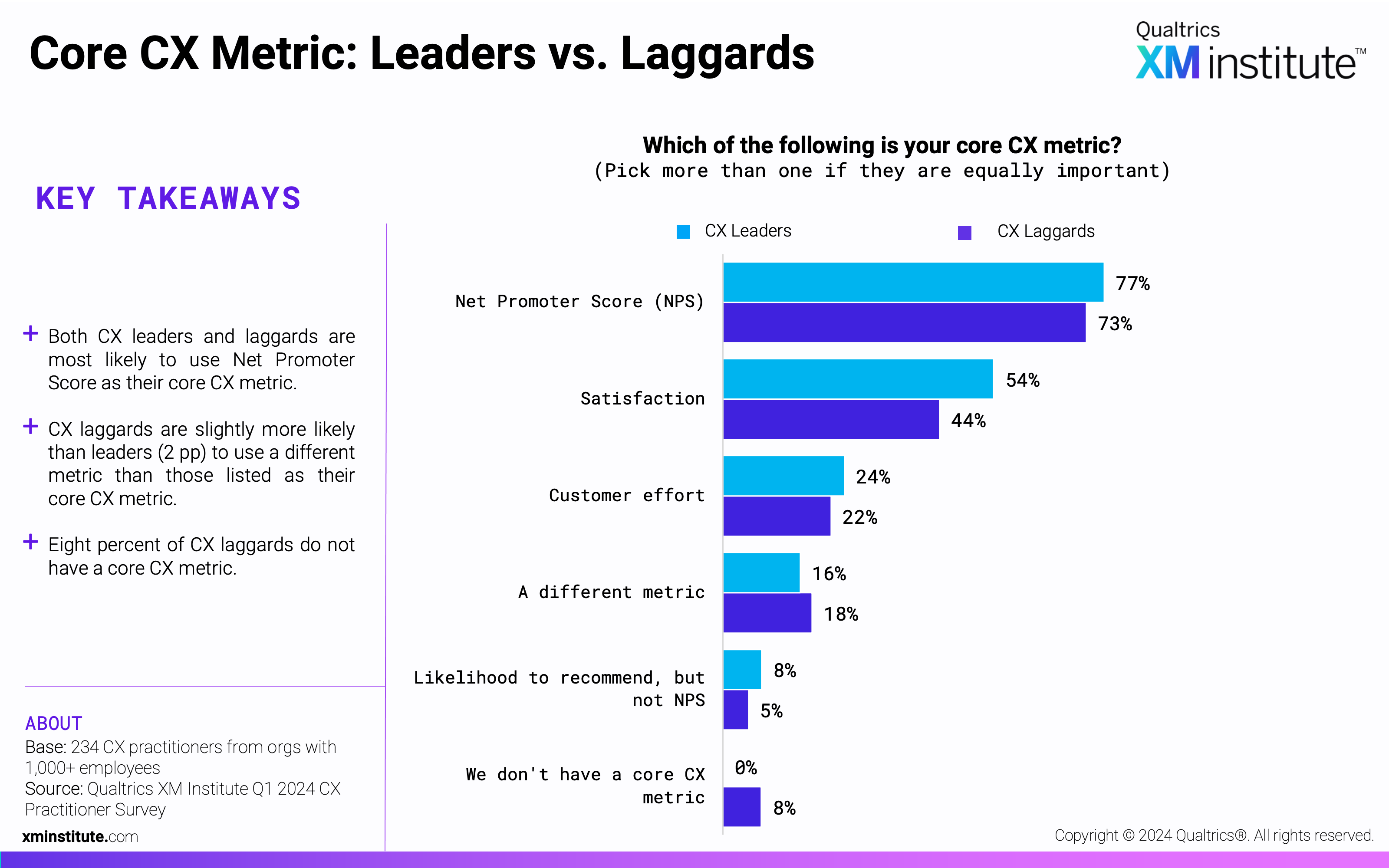
- Listening Elements: Leaders vs. Laggards
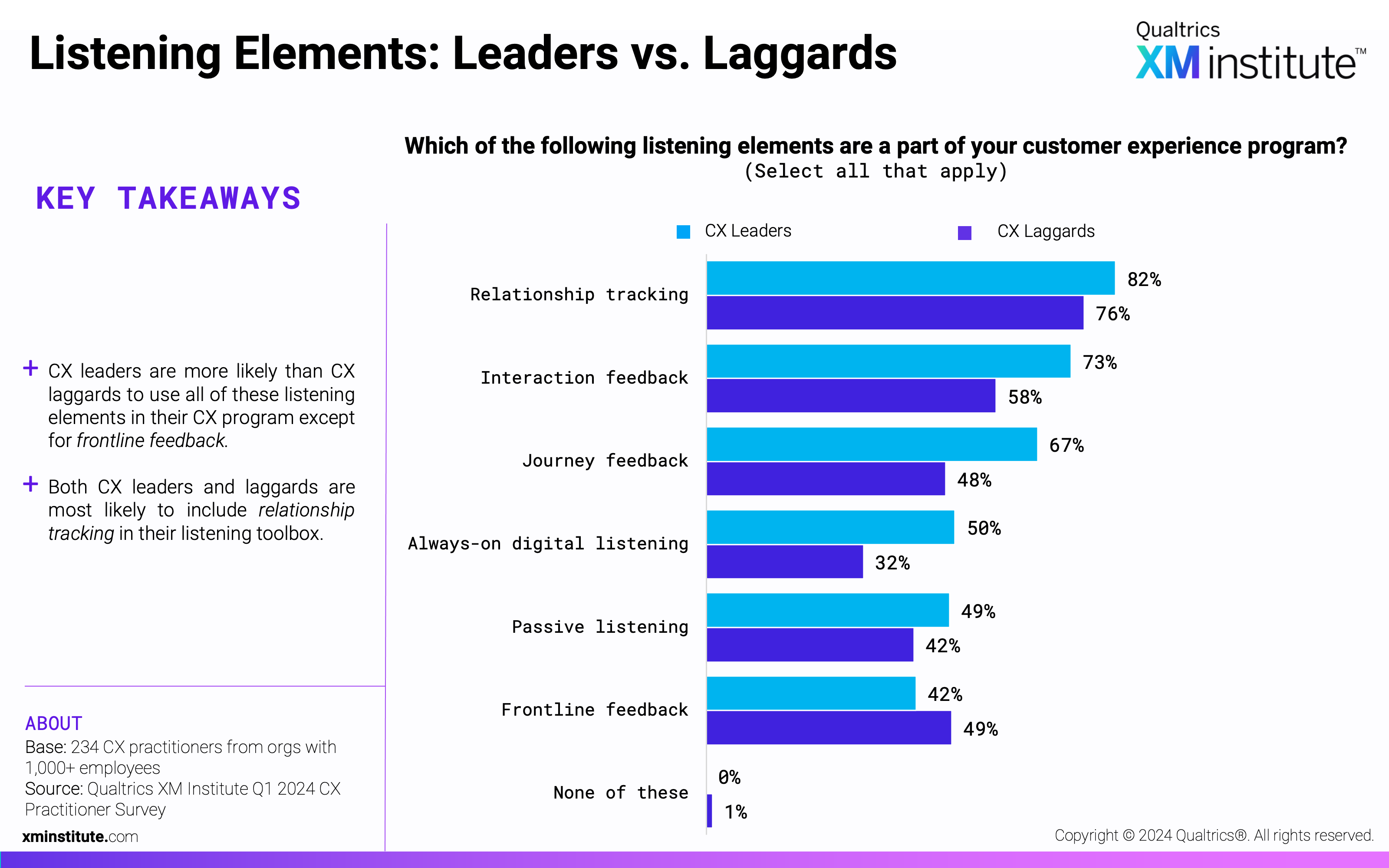
- CX Technology, Competency, and Culture
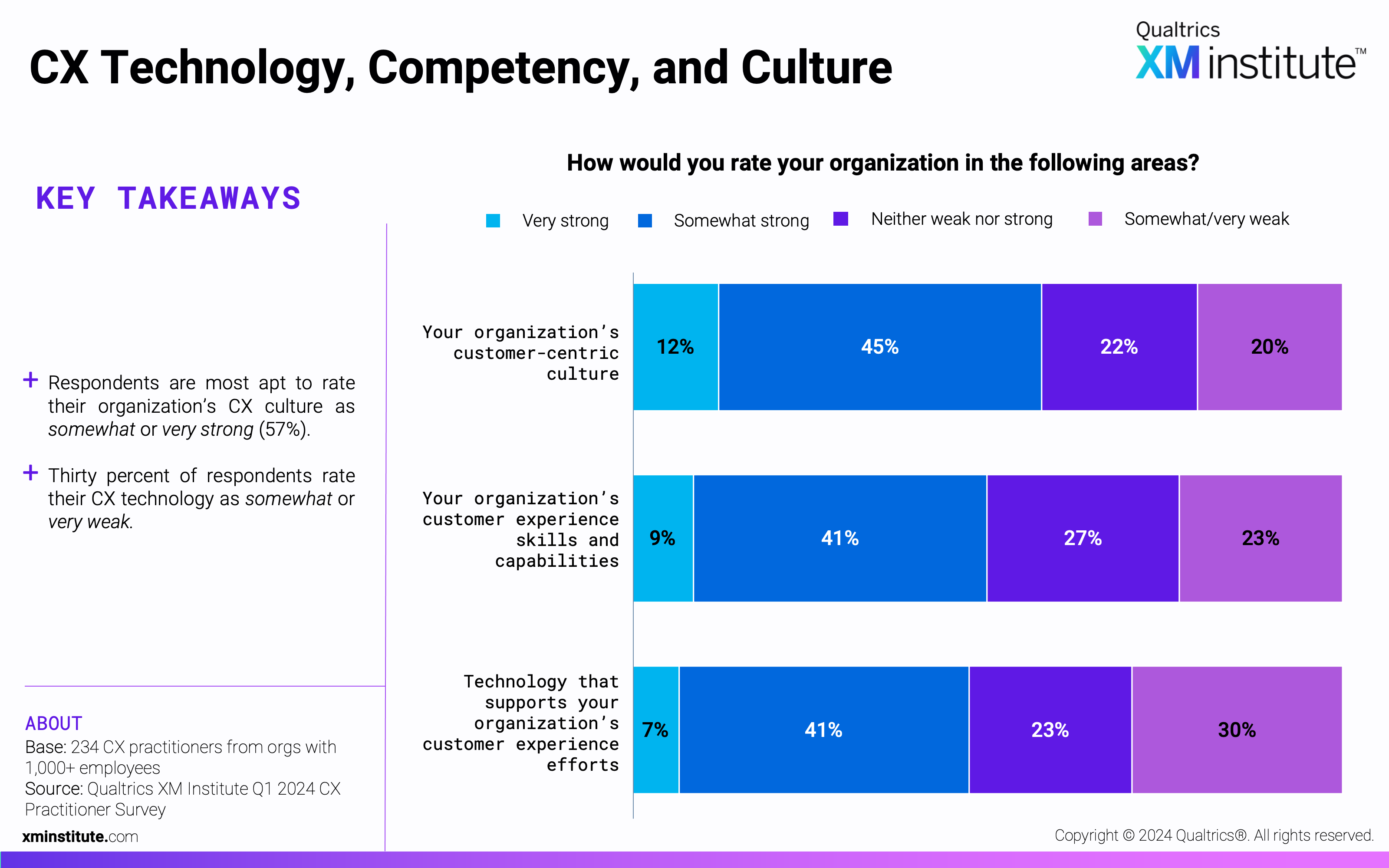
- Obstacles to CX Success
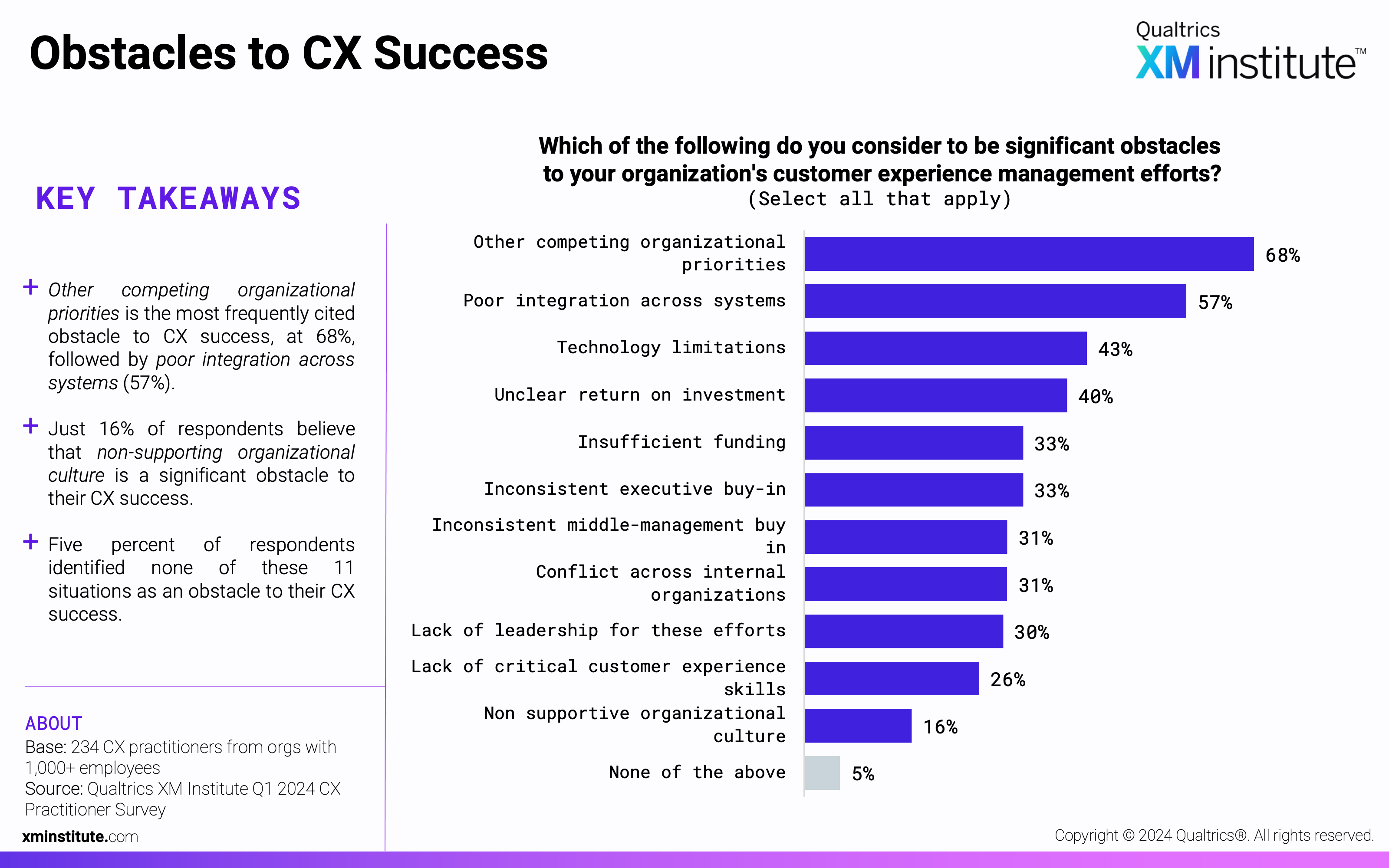
- CX Obstacles: Leaders vs. Laggards
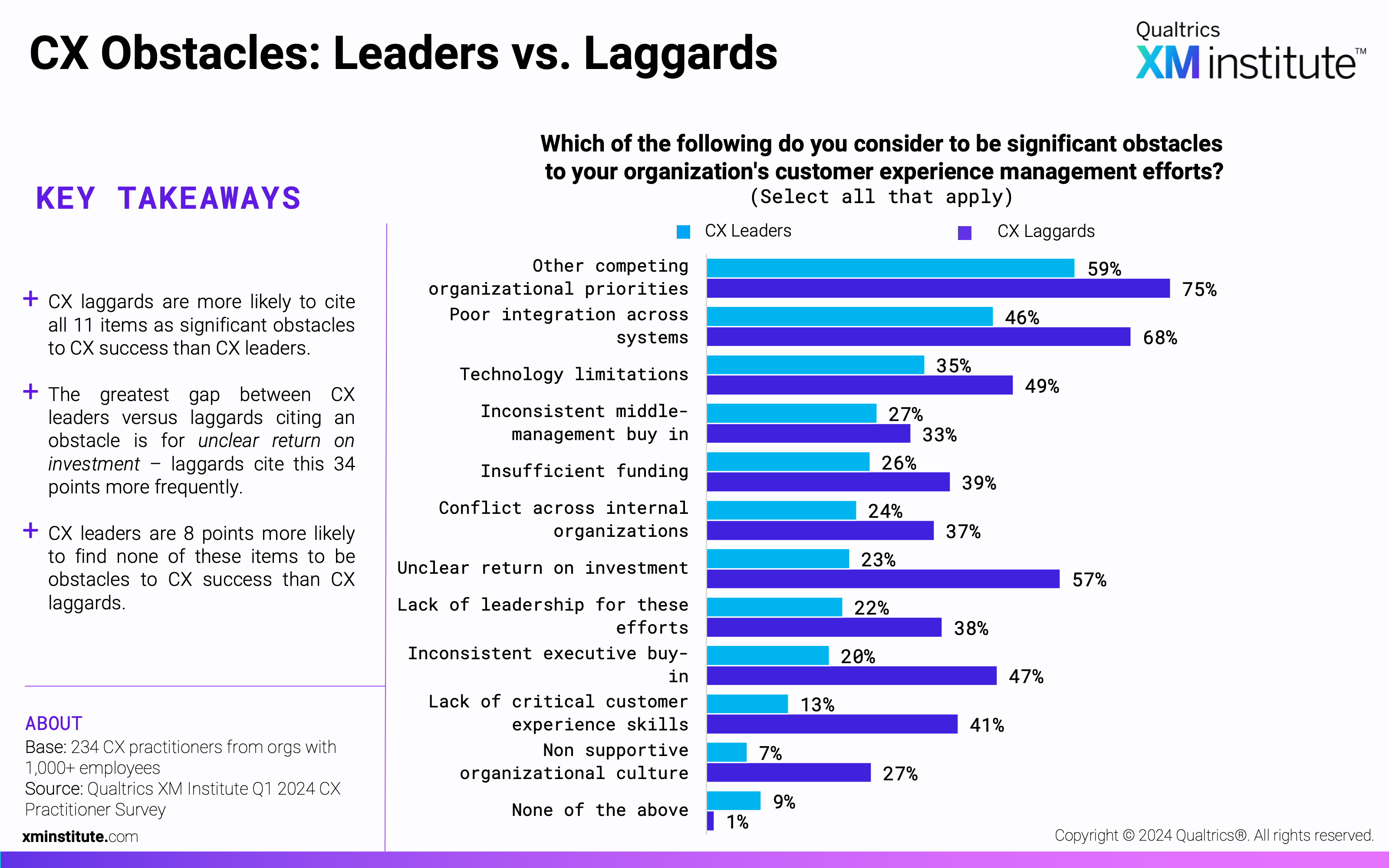
- Momentum of AI-Powered Analytics Tools
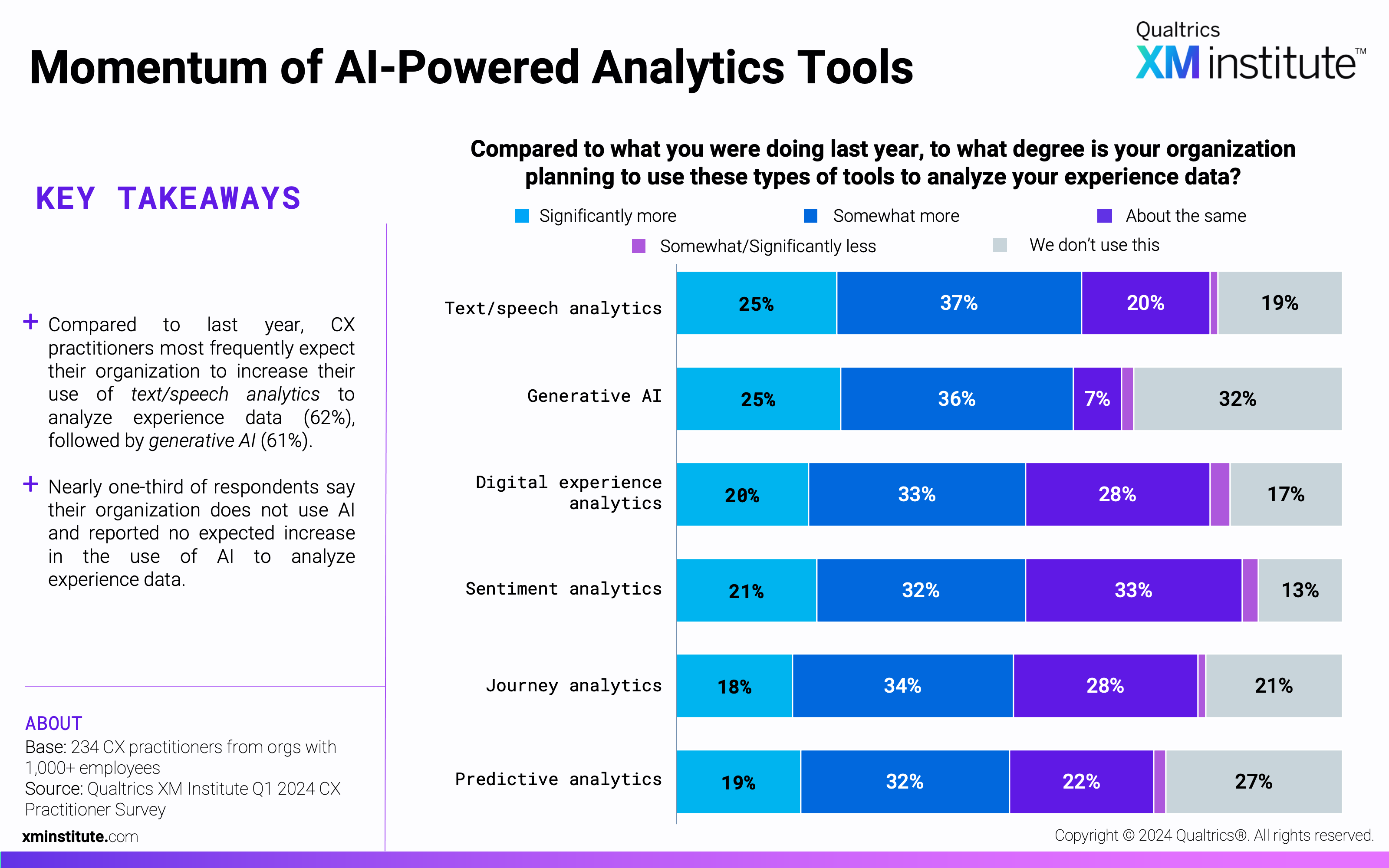
- Momentum of CX Technologies for Driving Action
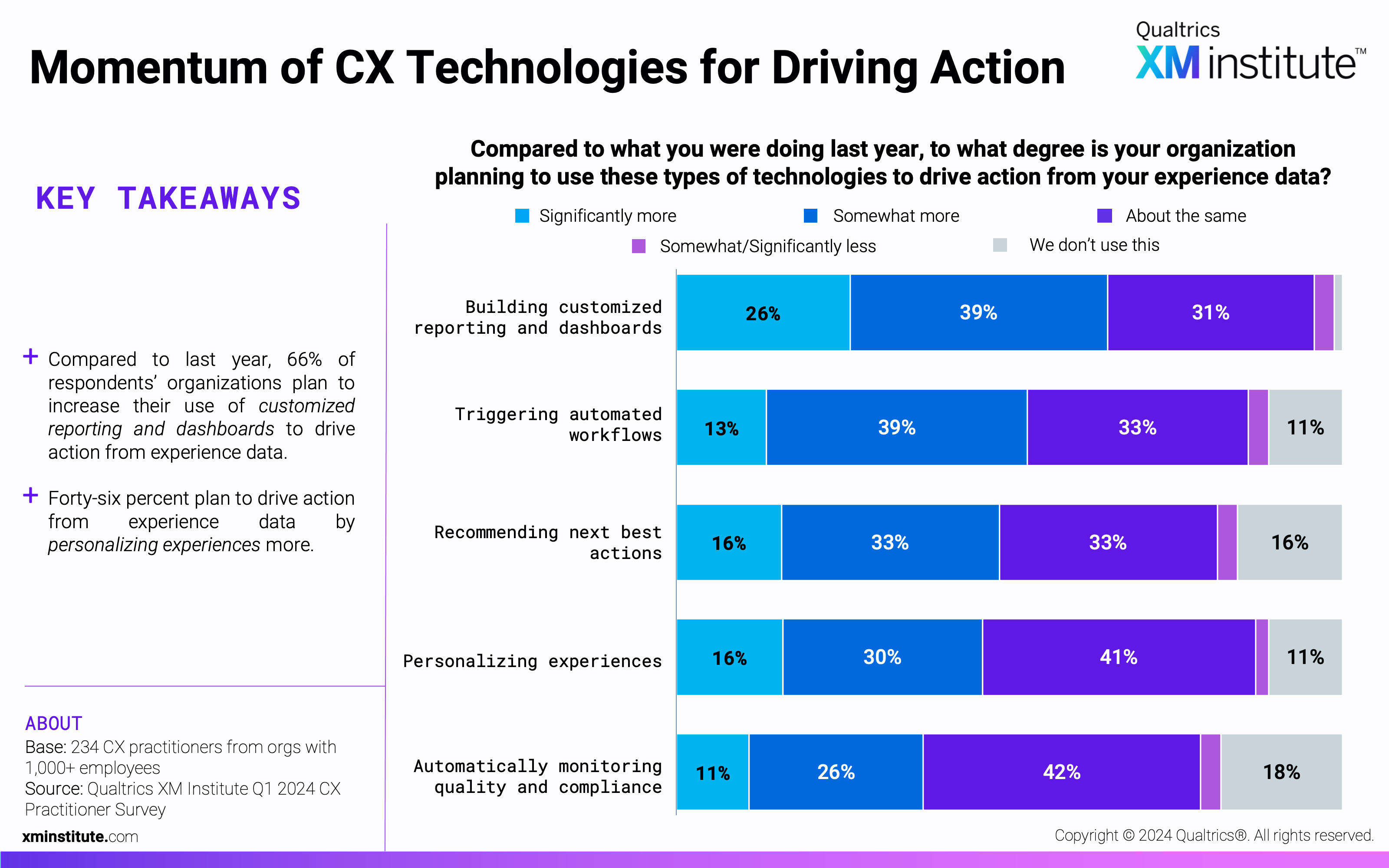
- Business Outcomes: Leaders vs. Laggards
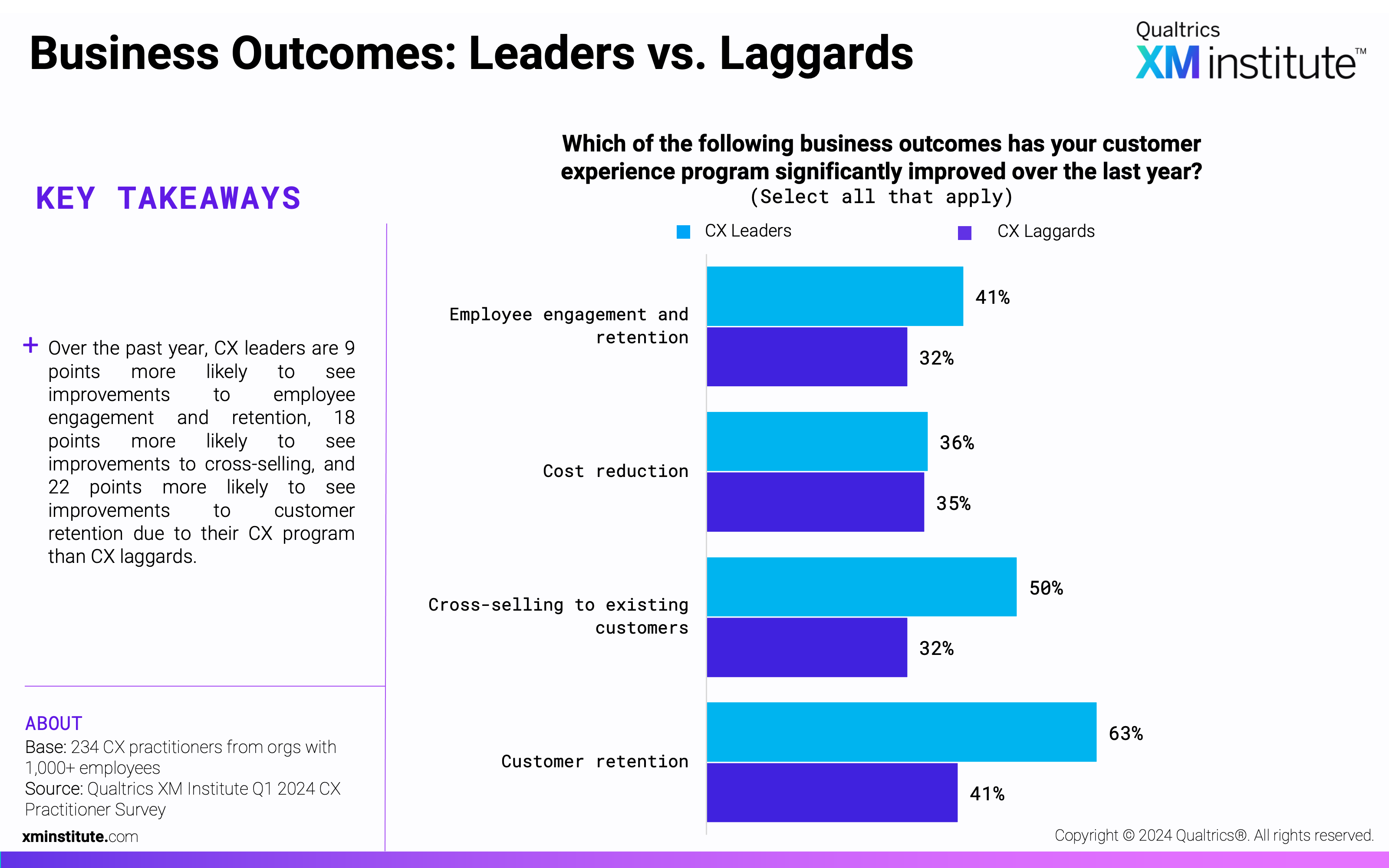
- Financial Results: Leaders vs. Laggards
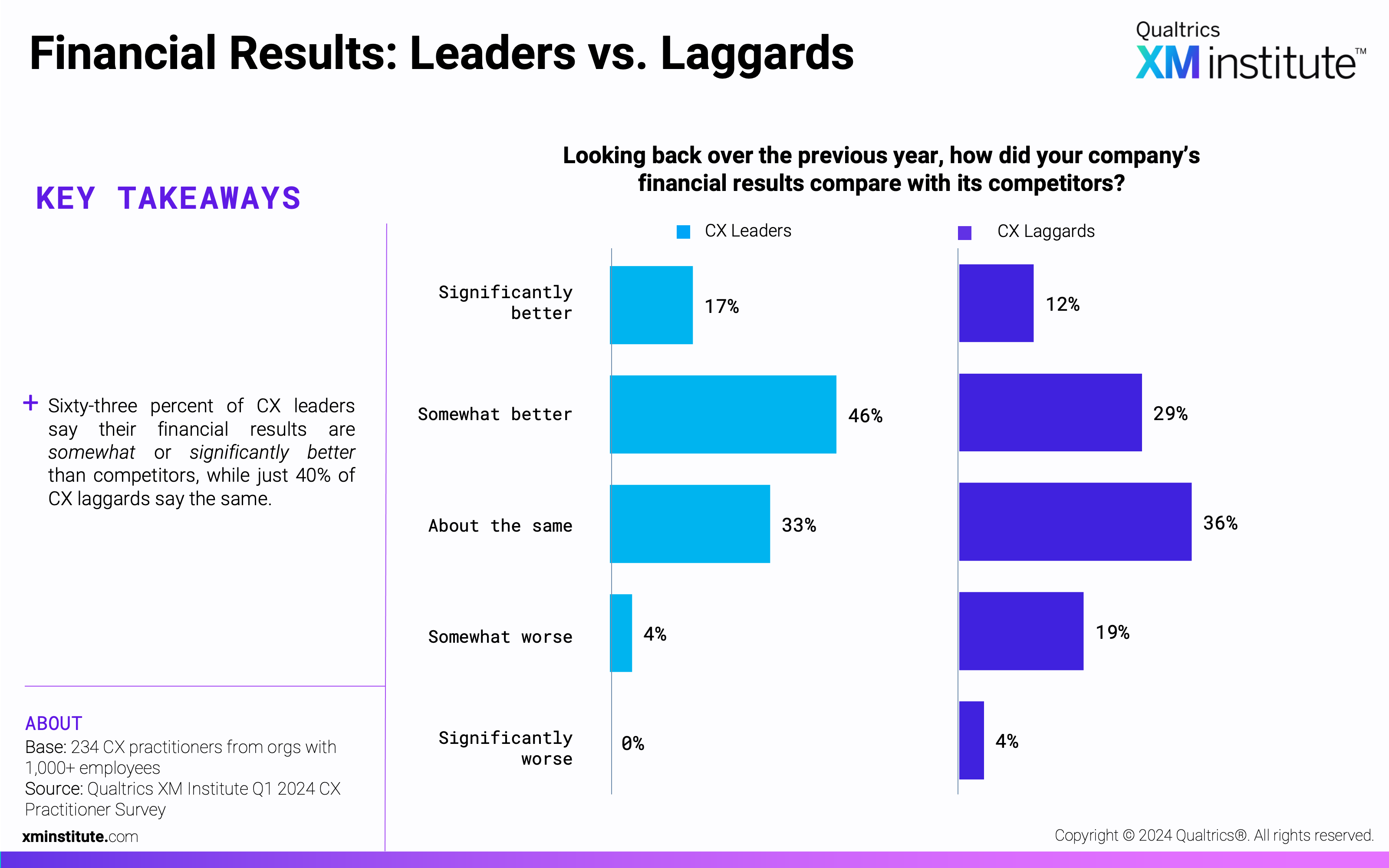
- Methodology
